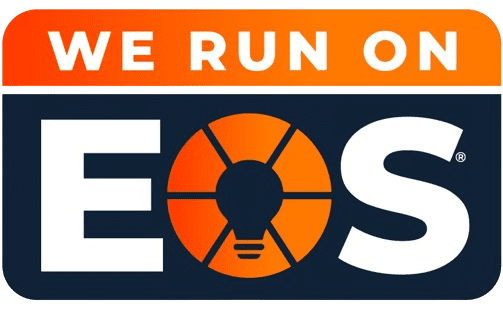I’m not proud of this, but I would say that procrastination is quite a talent of mine, as demonstrated most recently when I put off retrieving a wig I promised to a friend for her Halloween costume. Deep down, I feared the wig wouldn’t be where I thought it was, so I put off checking. The box was high up in my closet, hard to reach, which added to my reluctance. When I finally looked, there it was, right where I left it. Finding it, telling my friend I’d found it, and checking it off my to do list felt so good.
Belabored self-analysis is also a habit of mine, so afterward, I reflected on why I delayed getting to this task — especially when I knew, deep down, I’d be so happy once I’d done it. Reflecting, I realized it wasn’t just the physical effort I was putting off but also the anxiety of confronting my own disorganization or forgetfulness. This situation is much like dealing with team conflict. No one wakes up excited to face conflict; it’s challenging and can reveal our own contributions to the problem.
So, how are leaders sometimes part of the issue in team conflicts? What can leaders do to address team conflict head on and transform it into greater team collaboration?
5 Ways Leaders Contribute to Conflict
1. Lack of Communication
Leaders who do not communicate effectively or frequently can cause misunderstandings and conflict. Providing vague instructions or failing to update the team on important changes can create confusion and frustration.
2. Favoritism
If a leader shows favoritism toward certain team members, it can breed resentment and conflict among the team. Perceptions of unfairness or bias can undermine team cohesion.
3. Inconsistent Expectations
Leaders who are inconsistent with their expectations or provide conflicting directives can cause stress and confusion. This ambiguity can lead to friction as team members struggle to understand their roles.
4. Avoidance of Conflict
Some leaders may avoid addressing conflicts directly, hoping they will resolve on their own. This can allow small issues to fester and grow into larger problems that are more difficult to manage.
5. Micromanagement
Overly controlling leaders who do not trust their teams to make decisions can stifle creativity and lead to frustration. Lack of autonomy can result in decreased motivation and increased tension among team members.
5 Actions Leaders Can Take to Reduce Conflict and Improve Collaboration
1. Be Empathetic and Actively Listen
Leaders can foster collaboration by practicing empathy and active listening. Encouraging an open dialogue where team members feel heard and understood can help de-escalate conflicts and build trust. By acknowledging different perspectives, leaders can identify common ground and steer the team toward productive discussions.
2. Set Clear Expectations
Establishing clear roles, responsibilities, and objectives can prevent misunderstandings that often lead to conflict. When team members know what is expected of them and what they can expect from others, it reduces ambiguity and aligns efforts toward shared goals. Leaders should regularly communicate these expectations and provide feedback to ensure alignment.
3. Provide and Encourage Constructive Feedback
Encouraging a culture of constructive feedback can turn disagreements into opportunities for growth. Leaders should model how to give and receive feedback in a positive manner, focusing on behaviors rather than personal attributes. This approach helps team members learn from conflicts and improve their performance collectively.
4. Leverage Strengths with Behavioral Assessments
Utilizing behavioral assessments can provide leaders with insights into individual team members’ strengths, preferences, and potential areas of conflict. By understanding these dynamics, leaders can assign tasks that align with each member’s capabilities and create balanced teams that capitalize on diverse skills. This personalized approach can transform potential friction into a powerful force for innovation and collaboration.
5. Promote a Collaborative Environment
Leaders should work to create a culture where collaboration is rewarded and celebrated. Activities like team-building exercises, cross-departmental projects, and collaborative problem-solving sessions can enhance team cohesion. When team members see collaboration as beneficial and rewarding, they are more likely to engage positively with one another.
The Cost of Team Conflict and Benefits of Collaboration
Conflicts within teams aren’t merely a nuisance — they can severely impact the bottom line. By addressing conflicts directly and promptly, businesses not only improve team dynamics but also enhance overall productivity and employee satisfaction.
Resolving conflicts proactively not only benefits the individuals involved but also contributes to a more engaged, productive, and loyal workforce. By enhancing team dynamics, you’re investing in a stronger company culture that aligns with your broader business goals.
Ignoring conflicts can lead to a toxic workplace environment, increased turnover, and lost productivity. Conversely, addressing and resolving conflicts creates a more collaborative and satisfying work environment, ultimately contributing to the organization’s success. Long-term employee retention and enhanced productivity are just the beginning of the benefits you can expect.
A Practical Checklist to Guide You Through Navigating Team Conflicts:
- Assess Team Dynamics: Start with comprehensive behavioral assessments to understand your team members better.
- Promote Open Communication: Encourage a culture where open dialogue is the norm. Create spaces where team members feel welcome to express concerns without fear of retribution.
- Encourage Self-resolution: Guide your team to solve conflicts among themselves, offering support and resources without taking over the process entirely.
- Tailor Conflict Resolution Strategies: Use insights from assessments to apply personalized strategies that resonate with the individual personalities involved.
- Monitor and Adapt: Continuously assess the effectiveness of your strategies and be ready to adjust them as team dynamics evolve.
Ready to transform your team’s approach to conflict? Our team specializes in providing personalized solutions through employee behavioral assessments. You can leverage our customized reports to assess the traits of your leadership team or any functional work team to identify the key traits, strengths, and potential conflicts under the surface. Our team will work with you to develop an action plan to use these insights to improve trust and enhance team collaboration. Contact us today to learn how we can help your organization navigate team challenges and unlock your team’s full potential!
Additional Resources
If you’re eager to dive deeper, check out our e-books Cultivating Excellence: The Blueprint For a Successful Company Culture and The Power of Insight: Why Developing and Engaging People is Your Ultimate Advantage.
By implementing these strategies, you’ll be better equipped to handle conflicts effectively, turning potential challenges into opportunities for team growth and development. Let’s build company cultures that thrive on collaboration and mutual respect. And I’ll continue to work on dialing down the amount of procrastination in my life.























